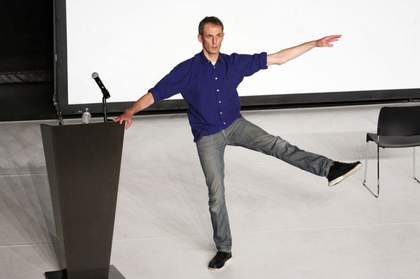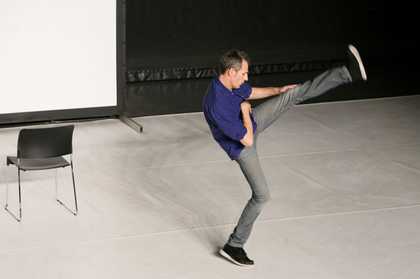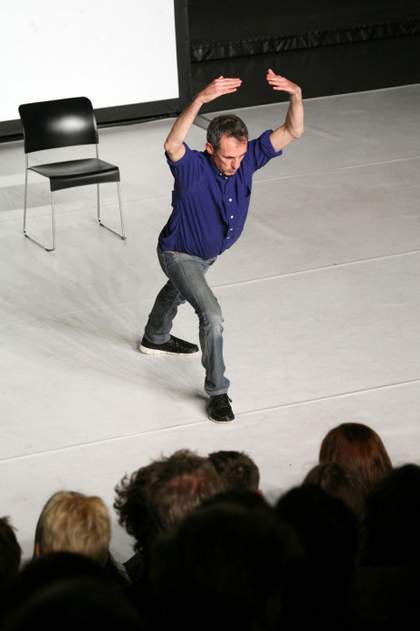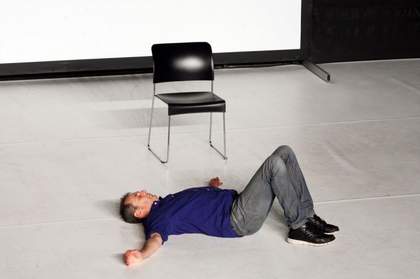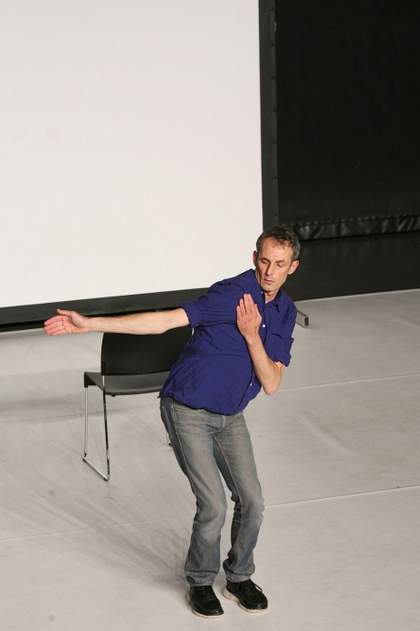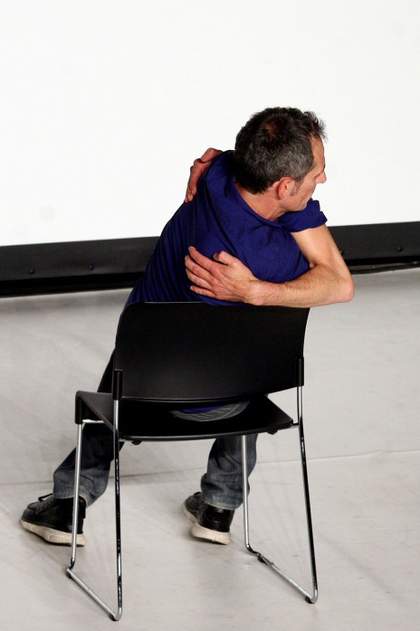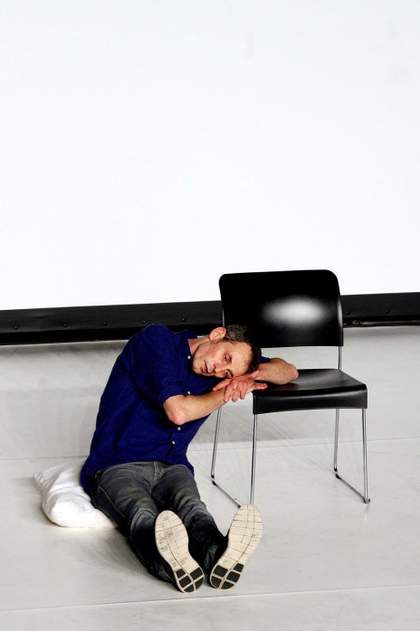Product of Circumstances was a performance by the French choreographer Xavier Le Roy. It took place on the bridge in the Turbine Hall in Tate Modern from 22.00 to 23.00 on 20 and 21 February 2009. The performance formed part of the UBS Openings: Saturday Live weekend programme at Tate Modern titled Characters, Figures and Signs: Choreography as ‘Doing’ and ‘Saying’. The two-day cross-disciplinary event presented modes of contemporary dance that were in dialogue with visual art and language.
Along with Le Roy, there were performances by artists including Jérôme Bel, Pablo Bronstein, Bojana Cvejić, Florian Hecker and Tino Sehgal. Through their interventions and experimental presentations, the artists explored the ways in which verbal and gestural languages intersect. Using his own body to mount a lecture-demonstration, Le Roy’s piece charted his personal trajectory from molecular biology PhD student to dancer and choreographer.
Originally written and created by Le Roy in 1999, Product of Circumstances has been performed in many iterations in museum spaces. His choreography imagined new modes of verbal and non-verbal communication, bridging the perceived gap between science and performance art with his own body. Le Roy describes this in the performance:
I began to take two dance classes a week at the same time that I started to work on my thesis for my PhD in molecular and cellular biology … Since I work as a dancer or choreographer I am very often presented as an atypical dancer or as a dancer molecular biologist … Biography as theory. An autobiographical conference becoming a performance. My body as raw material of social and cultural organization and as the practice of critical necessity.1
Le Roy used the format of a lecture-performance to blend together artistic and scientific methods and explore points of divergence and reciprocation between the two. The Turbine Hall bridge had been laid out like a seminar theatre with a lectern, seated audience and digital screen. The use of the bright lights, rather than theatrical or dimmed lights, also differentiated it from a traditional performance. In his technical instructions Le Roy stipulated that ‘the light should stay on (audience members should be able to write or read during the performance)’.2 The academic effect was extended by the inclusion of a period for audience questions, which was also intentionally built into Le Roy’s technical specifications.
Product of Circumstances showcased the body, specifically the artist’s body, as a resource and a site for experimentation – a common thread between artwork and scientific practice. Le Roy described the process of becoming a dancer as if giving a lecture, but accompanied this speech with actions such as stretching and bending to touch his toes to test and illustrate his flexibility. Through physical actions and spoken word he traced the life of his body, building a narrative that included his relationship to different spaces, from the laboratory, to the dance studio, as well as public space. In this way, Le Roy connected the work of dancing and choreography with that of biological research, considering both as ways to understand the body and its relation to the environment. He stated in the work: ‘I would like to suggest that this performance was about a contaminated body in its weavings of historical, social, cultural and biological levels.’3
Philomena Epps
April 2016

